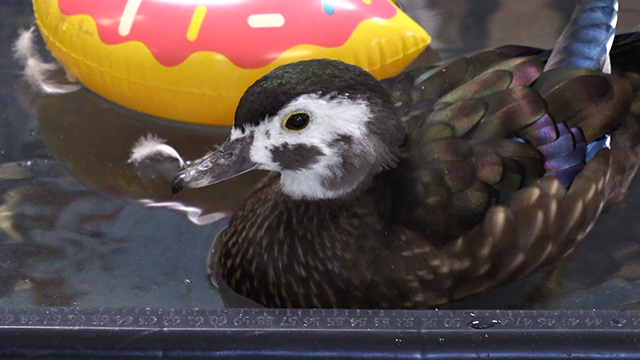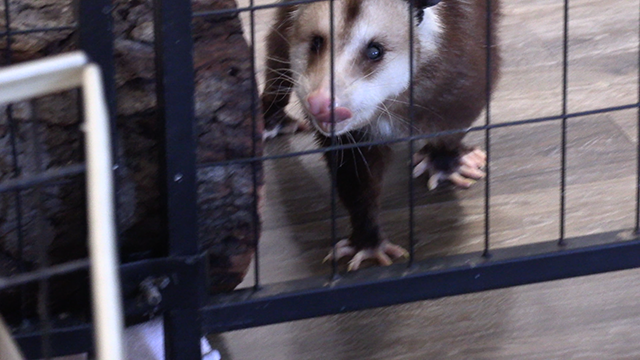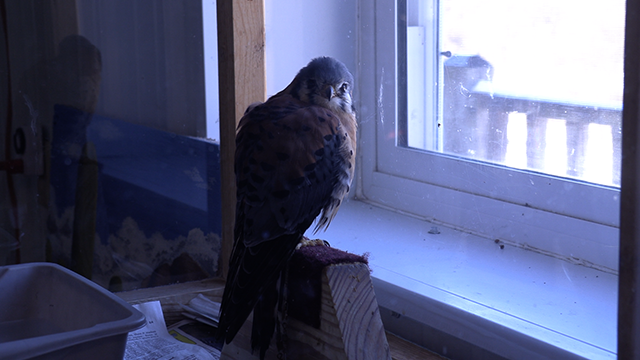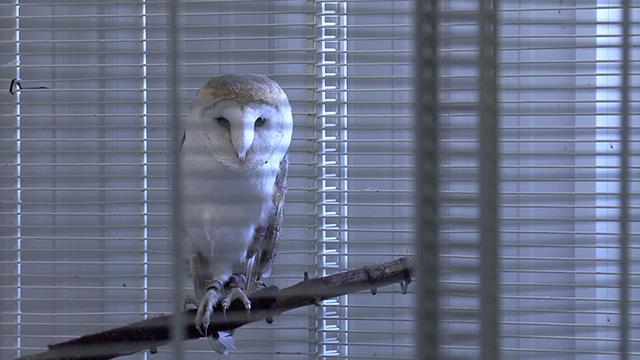WildCare Inc, Monroe county’s animal rehabilitation center, needs to raise a minimum of 500,000 dollars to relocate their facilities.
The current facility has housed WildCare for over 20 years on the land of one of the founders. But this arrangement has become a squeeze as the business has expanded. Several government agencies regulate animal rehabilitation to make sure it’s being done in the best possible way for the animals. This requires a lot of space, one of the main resources in high demand at the current facility.
Not only do the animals need an appropriate amount of space in their enclosure, but WildCare also needs room to store linens and other necessary care supplies. Sarah Maddox, the director of animal care, shares her office with a floor-to-ceiling wall of shelved bedsheets and towels.
The executive director of WildCare Sarah Maddox discusses the nature of the work from the rewards to the failures. She also gives advice on how to contact WildCare in the case of finding a distressed wild animal.
Since the expenses for a lot of these supplies come from personal investment on the part of the volunteers, Wildcare hopes the move will make the budget go farther than paying for rent and building maintenance. Government regulations prevent wild animal rehabilitators from making money off their work, meaning the non-profit business exists on the backs of donations. The relocation aims to repurpose those donations from rent to more hands-on expenses with the introduction of a permanent facility. “The year-to-year struggle to maintain what we do is–for a lot of people, having done it for a couple of years, they end up feeling exhausted,” said Maddox, “And we want to prevent that.”
While relocation remains a couple years in the future, WildCare plans to ramp up its fundraising quickly due to the hefty sum needed to invest in a new location. They raise funds through participating in community events, classroom or birthday trips and a yearly week-long children’s summer camp. The camp has been on hiatus since the start of the pandemic in 2020 and due to lack of volunteers and staff.
Information on how to donate or bring injured animals to WildCare’s facilities can be found on their website at wildcare.org. Maddox said of the move, “Even granting a new location and a new building, simply moving these animals to a new place is going to be an incredibly huge undertaking.”

Vincent is a Silver-haired Bat. Native to the entire continental United States, he is in the Least Concern category of endangerment.

Yindi is a Woma python. Originally from Australia, the Woma python is in the Least Concern category of endangerment.

River is a wood duck. Native to much of the continental United States, she is in the Least Concern category of endangerment.

Poppy is a Virginia opossum. She is native to much of the continental United States, and she is in the Least Concern category of endangerment. Poppy is also blind.

Pippin is a Peregrine Falcon. Native to much of the world, he is in the Least Concern category of endangerment.

Felix is an American Kestral. Native to much of North and South America, he is in the Least Concern category of endangerment.

Monaco is an Eastern Box Turtle. Native to most of North America, she is in the Vulnerable category of endangerment.

Valentino is a Barn Owl. Native to all continents excluding most of Asia, he is in the Least Concern category of endangerment. At 20 years old, he is one of the oldest known barn owls.

Banshee is also a barn owl. She did not like the camera and is using a 'startle display' to try and ward me off.

Alastor is an American Crow. Native to most of the United States and Canada, he is in the Least Concern category of endangerment. Alastor is also missing one eye.




















